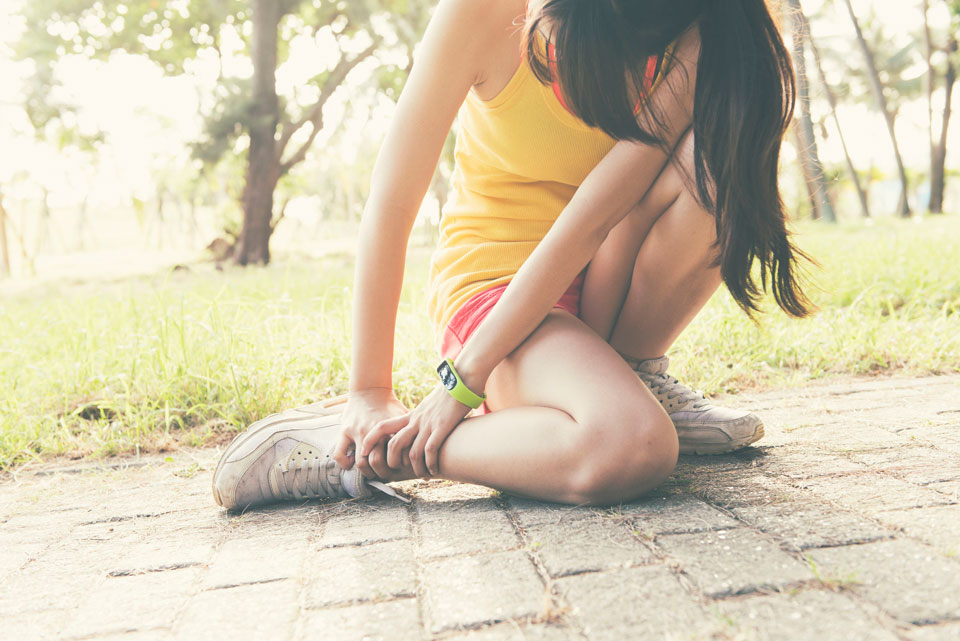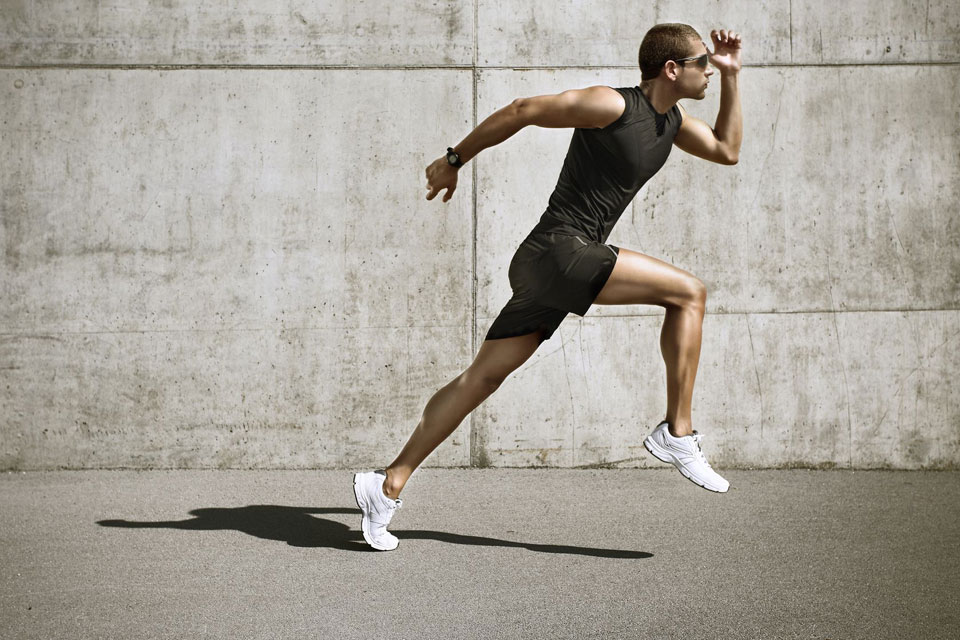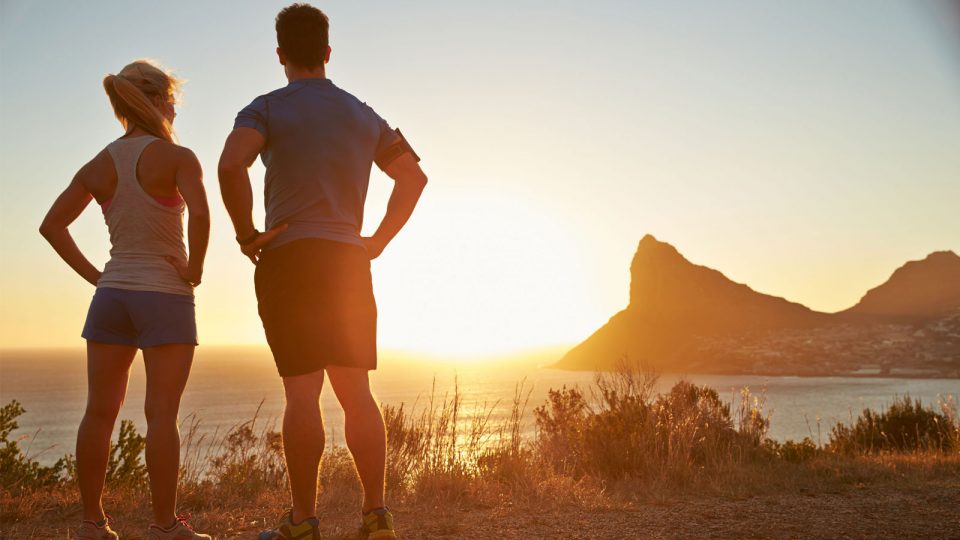Runners can be classified into two groups. There are those who run because they enjoy the physical exertion. The wind in their hair and on their cheeks, the sweat rolling across their face and down their neck and the slow burn of lactic acid building inside tiring muscles that provide a natural high they strive for.
For the most part, those “pure” runners are outnumbered by the runners who simply endure the physical side of running in order to accomplish the end result: a toned body and good health.
Running is not easy. Various running injuries are common to all runners, from the dedicated marathon runner to the pot-bellied forty-year old trying to get back in shape for his 20th high school reunion.
Life itself has deadly sins. The most recognized are greed, pride, lust, envy, gluttony, wrath and sloth. The sport, or act, of running has its own lists of deadly sins that warn runners how to act and stay injury free.

Some lists instruct runners on how they should act when they participate in the activity. Call it a take-off on Emily Post’s Guide to Etiquette. Here are 5 of the most abused traits:
- Don’t brag about how great your run was to a side-lined runner nursing an injury. This could lead to your own injury such as a punch in the nose.
- Never wear a t-shirt from a race you’ve never run. You’d best run the Hawaiian Iron Man Triathlon before showing up wearing a participant’s t-shirt. If not, you’re a target for ridicule or a quick Aloha (goodbye).
- Not returning a wave from a passing runner is a sin. In the early days of the Volkswagen craze, bug owners used to acknowledge each other with a wave or a toot of the horn. Not responding in like was rude. Not returning a runner’s wave carries the same societal no-no.
- Avoid wearing inappropriate clothing like tight, white shorts. They’re not fart-proof and certainly do nothing for your modesty. When they yell, “Let it all hang out!” fellow runners may be talking about your private parts rather than instructions to go full speed.
- Lying about your race time is another no-no. Don’t fudge with the stop watch or pedometer. Nothing can exclude you from a group of running mates faster.
The Serious Seven Deadly Sins of Running
Statistics say that in any given year, 70 per cent of dedicated runners can expect to have some form of running-related injury that puts a temporary halt to their training.

Often these injuries are caused by simple mistakes and can be avoided. Here are seven of the most common deadly sins runners commit:
1. Over-striding
An ostrich can cover 10 to 16 feet in a single stride. But you’re not a flightless bird from Down Under, so don’t try to run like one. Run with a measured stride that is comfortable for you and that you can maintain throughout the run.
2. Wasted motion
We’ve all seen runners who wave their arms like a Dutch windmill or bounce up and down like they’re riding a pogo stick. All that exertion is unnecessary motion that drains energy without adding to the runner’s pace or time.
3. Dehydration
Besides a muscle pull or a severe fall, nothing can bring grief to a runner more than not keeping the body hydrated.
Heat, humidity, terrain and distance all play a part in determining the amount of water our body will consume and expel during a run. Because these factors differ, there is no hard rule as to how much water you should drink before running and how much liquid you should consume during the run.
Some coaches suggest filling your tank by drinking 16 ounces of water one hour before the run. During the run, drink from 5 to 12 ounces of water or a sport drink every 15 to 20 minutes.
Over-drinking (hyponatremia) is just as dangerous to your health as not drinking enough liquids. Too much water and not enough salt can lead to seizures and worse.

4. Too Far, Too Fast
Runners need to know their physical limitations and stay within those boundaries. Tarahumara Indians from the mountains of northern Mexico are able to run up to 200 miles over a 2 day period. Trained runners break the 4-minute mile barrier every year. Chances are you’re not a member of either of these groups, so pace yourself accordingly.
Over-exertion can lead to heat exhaustion, abnormal fatigue, a stroke or even heart failure.
5. Lack of Sleep
Sleep is nature’s great healer. We all need sleep to let our bodies re-energize and recover. Not getting a good night’s sleep, especially before an endurance race or even a five-mile jog, can greatly reduce your performance and lengthen your recovery time afterwards.
Whether anyone has ever fallen asleep while they were running is not certain. Don’t be the first, but it would make a funny T-shirt. “Anyone can Sleep Walk. I can Sleep Run!”
6. Poor Pronation
Normal pronation means you have a normal foot arch. Flat-footed runners need to wear shoes that have moderate arch supports. Runners with high-arched feet do best in neutral-cushioned shoes that provide a more natural arch.

7. Sitting on your Hips
This term describes the running position when your pelvis tilts forward and the hips push back. It reduces power in the hips, puts extra stress on the lower back and automatically shortens your stride. Most runners’ back and hip problems are a result of “sitting on your hips.”
Runners Shall Not Sin
If you want to start running for fun and exercise, or you are already a runner, do you have any idea of the risks involved?





